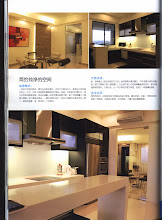When you enter a room, see someone walking toward you on a street, or look up at a billboard while stuck in a traffic jam, the first thing you notice is colour. The yellow walls in a child's room make you smile, the red of a woman's coat catches your eye, the orange background of an advertisement grabs your attention. Would you jump into a swimming pool if the pool is in orange or red? This very clearly tells us how greatly colours affect us.
( summary extracted from the book " The Complete Color Harmony"
RED



- True red is the most vibrant, compelling colour in the spectrum, expressing excitement, speed, power, joy, danger and passion.
- Red attracts immediate attention and brings objects or images to the foreground.
- Red makes people feel warm. Coffee will seem hotter in a red cup than in a blue one.
- Red is the first colour you lose sight of at twilight and is not well seen at a great distance.
- Barn, claret, and crimson reds are considered regal, exclusive, and strong and have great appeal for men.
PEOPLE WHO LIKE RED ARE ...
YELLOW



- Yellow is psychologically the happiest colour in the spectrum, associated with warmth, optimism, and joy.
- Yellow visually pops out at you, making it the most noticeable colour. It's therefore a favourite for signs and product packages.
- Yellow stimulates clear thinking. Black type on a yellow ground is the most legible colour combination and aids in memory retention.
- Yellow adds vitality to other colours, making hot hus appear even more brilliant and bringing cool colours to life.
- Overexposure to bright yellow can be unsettling. Paler hues are better for socializing, whereas gold tones signify wealth.
ORANGE



- Orange is stimulating, energizing colour that appears friendly, outgoing, cheerful and adventurous.
- Bright orange has a very high visibility, making it ideal for warning signals or grabbing attention, even when used in small amounts.
- Easier on the eye, autumnal and spicy oranges are warm, exotic, and appetizing, while peach tones are most flattering to the skin.
- People who wear orange are thought to be creative, enthusiastic, and fun to be with, but possibly also a bit irresponsible.
- Because of its playful, active qualities, orange is a favourite of children, teens, and athletes.
PEOPLE WHO LIKE ORANGE ARE ...
GREEN



- Pale green is physically the most relaxing and calming colour in the spectrum. As the easiest colour on the eye, it can improve vision.
- Vibrant greens remind people of the spring, nature, life, and youthful energy.
- Darker greens are associated with stability and growth, suggesting high economis status and success.
- Green is the worldwide symbol for safety. Green also means go.
- People who wear green are thought to be kind, dependable, and generous.
PEOPLE WHO LIKE GREEN ARE ...
You long to feel safe and make the world a better place for others. You are generous with your time and goodwill, but also can be stubborn about issues that are important to you.
BLUE



- Practically all our associations with blue are positive, making it an uplifting and peaceful colour.
- Navy blue commands respect, representing loyalty, trustworthiness, fidelity, and integrity.
- Blue can make a space appear larger, and time seems to pass more slowly in its presence.
- Deep blue is associated with opulence in many cultures, and when you are the best, you get a "blue ribbon".
PEOPLE WHO LIKE BLUE ARE ...
PURPLE



PEOPLE WHO LIKE PURPLE ARE ...



- Pink is the most passive of all colours, promoting affability while discouraging aggression against oneself as well as others.
- Considered the most feminine colour, pink is associated with nurturing and compassion.
- Pink calms and soothes, and is thought to aid in digestion.
- Shocking pink has a much higher concentration of red, making it appear energetic, fun and trendy.
- Men prefer peachy pinks to mauvey ones.
PEOPLE WHO LIKE PINK ARE ...
BROWN


- Brown is a warm, comforting colour associated with the earth, trees, hearth, and home.
- People tend to buy big-ticket products in neutral colours, especially in an uncertain economy. Browns both put consumers at ease and are considered timeless.
- Brown has a common feel in clothing, making one look approachable, reliable and sincere.
- Brown has a masculine, rugged quality that particularly appeals to men.
- Paper-bag brown is used in packaging to denote a natural product.
GRAY



- Gray represents non-involvement, giving it a formal, dignified, and conservative authority.
- Unlike neutral brown, gray lacks warmth, which can make it appear remote, solemn, and a bit gloomy when used alone.
- Gray is associated with wisdom and maturity, adding to its moneyed appeal.
- Metallic grays offer the promise of scientific and technological advances, as well as a sense of speed and competence.
- Grays are cool and restful in home decor, but also discourage lively conversation and offer an unattractive backdrop for food.
PEOPLE WHO LIKE GRAY ARE ...
WHITE


- White symbolizes purity, innocence, goodness and truth.
- Even though white is neutral, it is considered a cool colour because of its association with snow and ice.
- White is often thought to suggest simplicity, sterility, and safety.
- White is popular on the packaging of dairy products, low-fat items, and refined ingredients such as sugar and flour.
BLACK



- Black, the most authoritative, intimidating colour, can appear agggressive when overused.
- Black is considered conservative, serious, and dignified and is used to show respect at solemn and formal occasions.
- Black gives a feeling of weight and depth. People think black boxes weigh more than white ones.
- Text is difficult to read against a black background.















